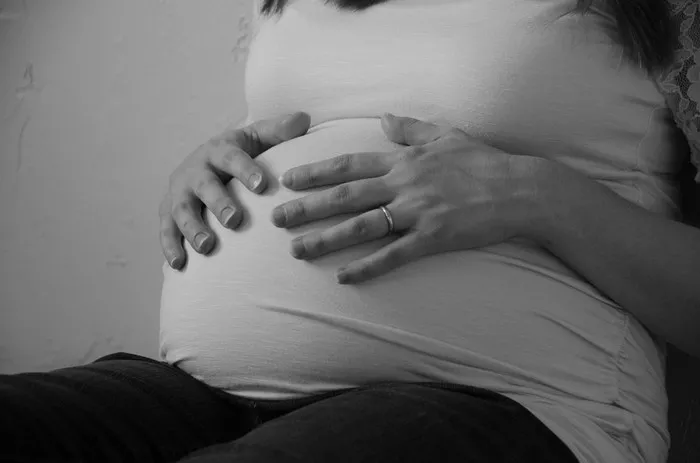Uterine fibroids are a prevalent concern among women during their reproductive years. These noncancerous growths in the uterus can lead to a variety of distressing symptoms, such as heavy menstrual bleeding, pelvic pain, and pressure on surrounding organs. A question that frequently pops up is whether fibroids will shrink on their own. Understanding this aspect is crucial as it can influence treatment decisions and women’s peace of mind.
During the reproductive phase, fibroids often grow and cause problems due to hormonal stimulation. However, there are circumstances under which they might potentially reduce in size without medical intervention. Multiple factors come into play, including hormonal changes, the natural course of a woman’s life stages, and the body’s own regulatory mechanisms. In the following sections, we will explore this fascinating topic in detail, looking at the various conditions and evidence that suggest whether fibroids can indeed shrink spontaneously.
Understanding Uterine Fibroids
Uterine fibroids, also known as leiomyomas, are made up of smooth muscle cells and fibrous connective tissue. They can range from minuscule nodules to large masses that significantly distort the uterus.
Types of Fibroids: Based on their location, there are three main types. Submucosal fibroids lie just beneath the uterine lining and are notorious for causing heavy menstrual bleeding and interfering with fertility. Intramural fibroids are embedded within the uterine wall and can lead to pain and a feeling of fullness in the pelvis. Subserosal fibroids develop on the outer surface of the uterus and can sometimes grow large enough to cause abdominal discomfort or put pressure on nearby organs like the bladder or rectum.
Growth Factors: Estrogen and progesterone are key drivers of fibroid growth. These hormones attach to receptors in the fibroid cells, triggering cell proliferation. Fibroids also have a rich blood supply that furnishes the necessary nutrients for growth. Additionally, growth factors like insulin-like growth factor and transforming growth factor-beta play a part in promoting their development.
Hormonal Changes and Fibroid Shrinkage
Menopause: As women approach menopause, significant hormonal changes occur. The ovaries gradually produce less estrogen and progesterone. This decline in hormonal levels is thought to create an environment unfavorable for fibroid growth. In postmenopause, when estrogen and progesterone levels are much lower, many fibroids tend to stop growing and may even shrink. For instance, a woman who had fibroids causing her discomfort during her reproductive years might notice a reduction in symptoms and fibroid size as she enters menopause, thanks to the hormonal shift.
Pregnancy and Postpartum: During pregnancy, hormonal levels soar. Estrogen and progesterone are abundant, which can cause fibroids to grow. However, after childbirth, there is a sudden drop in these hormones. In some cases, this hormonal plunge can lead to a degree of fibroid shrinkage. Some women report that fibroids that were enlarged during pregnancy become smaller in the postpartum period.
Evidence from Research Studies
Several research studies have delved into the question of spontaneous fibroid shrinkage. A longitudinal study followed a group of women with fibroids over a period of five years. It was found that approximately 20% of the women experienced a reduction in fibroid size without any specific treatment. The degree of shrinkage varied, with some fibroids shrinking by a few millimeters, while others showed more significant volume decreases.
Another study focused on the hormonal profiles and fibroid sizes of a cohort of women. It was observed that women with fluctuating hormonal levels, such as those approaching menopause or in the postpartum phase, had a higher likelihood of fibroid regression compared to women in a stable hormonal state. However, it’s important to note that not all fibroids respond in the same way, and predicting which ones will shrink on their own remains challenging.
Clinical Symptoms Associated with Fibroid Shrinkage
Reduction in Menstrual Bleeding: If fibroids are shrinking, especially submucosal ones, women may notice a decrease in the heaviness of their menstrual periods. Instead of dealing with heavy flow and frequent pad changes, the bleeding becomes more manageable. This can be a significant relief, improving their quality of life during menstruation.
Less Pelvic Pain and Pressure: Fibroids that shrink will put less pressure on surrounding organs. Women who previously experienced pelvic pain, perhaps due to large intramural fibroids pressing on nerves or other structures, may find the pain subsiding. Similarly, the pressure on the bladder or rectum, which can cause urinary frequency or constipation, may lessen as the fibroids reduce in size.
Improved Abdominal Appearance: A woman with fibroids may have had a visibly distended abdomen. As the fibroids shrink, the abdomen may flatten, enhancing her body image and comfort. She can wear clothes more comfortably and engage in physical activities without the hindrance of a protruding belly.
Management and Monitoring of Fibroids
Regular Check-ups: Even if there’s a possibility of fibroids shrinking on their own, it’s essential for women to have regular pelvic exams and ultrasounds. This helps monitor any changes in fibroid size and detect potential issues early. A yearly pelvic exam can identify any new growths or alterations in existing fibroids, while ultrasounds provide a detailed view of their size, location, and characteristics.
Lifestyle Modifications: Maintaining a healthy lifestyle can potentially support fibroid shrinkage or at least prevent further growth. A diet rich in fruits, vegetables, whole grains, and lean proteins provides necessary nutrients. Exercise, like walking, swimming, or yoga, helps with weight management and can contribute to better hormonal balance. Stress management techniques such as meditation and deep breathing exercises can also play a role in keeping hormones in check.
Treatment Considerations: If fibroids are not shrinking and continue to cause significant symptoms, treatment options should be explored. Medical management with hormonal medications can sometimes be used to control bleeding and potentially shrink fibroids. Minimally invasive procedures like uterine artery embolization or laparoscopic myomectomy are available for more severe cases. In rare instances, when other options have failed or for women who no longer wish to preserve fertility, hysterectomy might be considered.
Long-Term Considerations
Fibroid Recurrence: Even if fibroids shrink on their own, there’s a risk of recurrence. This can happen if hormonal conditions change, for example, if a woman gains weight (as fat cells can produce estrogen) or if there’s a disruption in her hormonal balance due to other factors. Regular monitoring can help catch any signs of recurrence early.
Overall Health and Aging: As women age, other health issues may emerge. While fibroids might shrink, conditions like osteoporosis can become more prevalent, especially if estrogen levels decline further. It’s important to manage these coexisting health problems while also keeping an eye on fibroids. A comprehensive approach that includes proper nutrition, exercise, and preventive healthcare can help women navigate through life with better health and quality of life.
Conclusion
In conclusion, while it is possible for fibroids to shrink on their own under certain circumstances, such as hormonal changes during menopause or postpartum, it’s not a guarantee for all women or all fibroids. Understanding the factors that influence fibroid shrinkage, along with proper management and monitoring, is key. By staying informed, having regular check-ups, and making healthy lifestyle choices, women can better handle the presence of fibroids and make decisions that optimize their health and well-being. Open communication with healthcare providers remains crucial throughout this process to ensure the best possible care.
Related topics


























